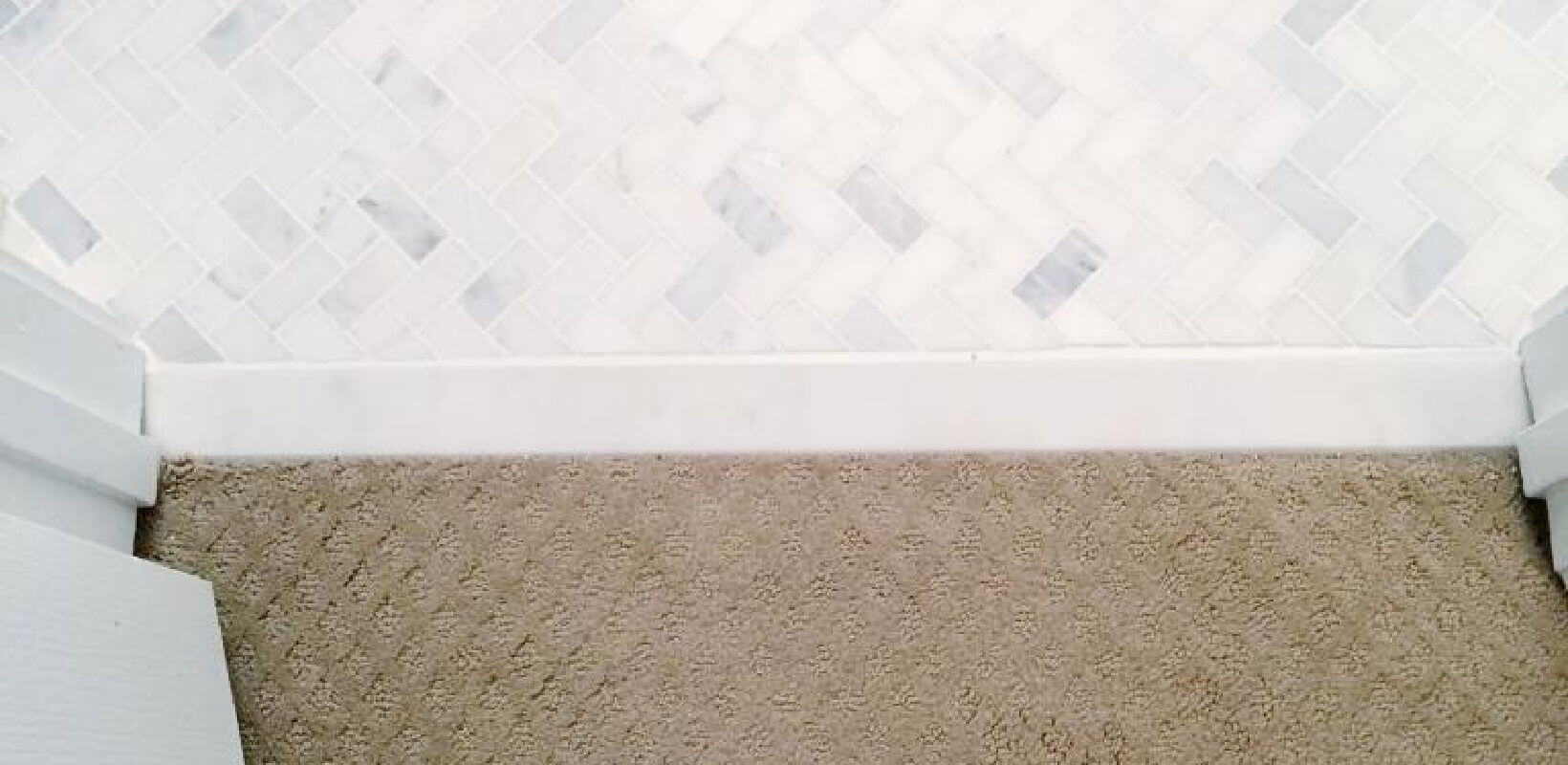Homes will have many different kinds of flooring, sometimes even in the same room. This makes your house more dynamic and your styles more varied. Hardwood may exist in the living room; tile may be in the kitchen. As they say, variety is the spice of life, and more flooring styles make for more interesting homes! However, it can be difficult to blend these styles, on both a physical and aesthetic level. In particular, the tile to carpet transition can be tricky, but when pulled off, it can really bring a room together. See below for four tips for different ways to smooth out the tile to carpet transition to make a single room visually unique or create a clear boundary between two separate spaces.
Z-Bar Transitions
Z-bars are a popular tile to carpet transition tool because they hide the edges of a carpet, meaning your carpet won’t be accidentally pulled out from under the bar. This leads to greater longevity. The Z shape of the bar cinches the tile to the carpet, keeping everything tucked in and avoiding tripping hazards. For this tactic, carpet must be installed before the tile. That will ensure the carpet is already tucked in.
Reducer Slips
Reducer strips are a fairly affordable and customizable form of tile to carpet transition. In this method, tile and carpet are installed alongside each other, existing on the same plane and rising to the same elevation. A slight, narrow empty space will be left between the tile and carpet, and then the reducer slip will be glued or nailed into that void to bring the two areas together. Reducer strips are normally smooth, slightly rounded surfaces that function like a little bridge, and they come in a variety of materials and colors so that homeowners can customize what kind of look they want between the two spaces.
The Tuck-In Method
After tile is installed, the tuck-in method is a common way to install carpet and then slide it in to create a seamless transition. Install a tack strip about a quarter of an inch away from the edge of the tile, then cut the end of the carpet so that it perfectly reaches the tile edge. Use a knee kicker to pull the carpet over the tile, and tuck under the gap and use hooks to hold in place.
Carpet Edge Gripper
These reliable grippers hold the edge of a carpet in their teeth so that carpeting comes to a neat finish before hitting an adjoining surface. Carpet edge grippers are normally made out of aluminum and are installed by being tacked to the subfloor. Then, the carpet is fed through to the tooth side of the gripper, which is placed at the perimeter of the transition area to create a clean end to the carpet.
Interested in bridging tile with carpet? Find materials you like at your nearby Home Depot; then, ACS will take care of the execution, creating a seamless tile to carpet transition with help from our flooring experts.
